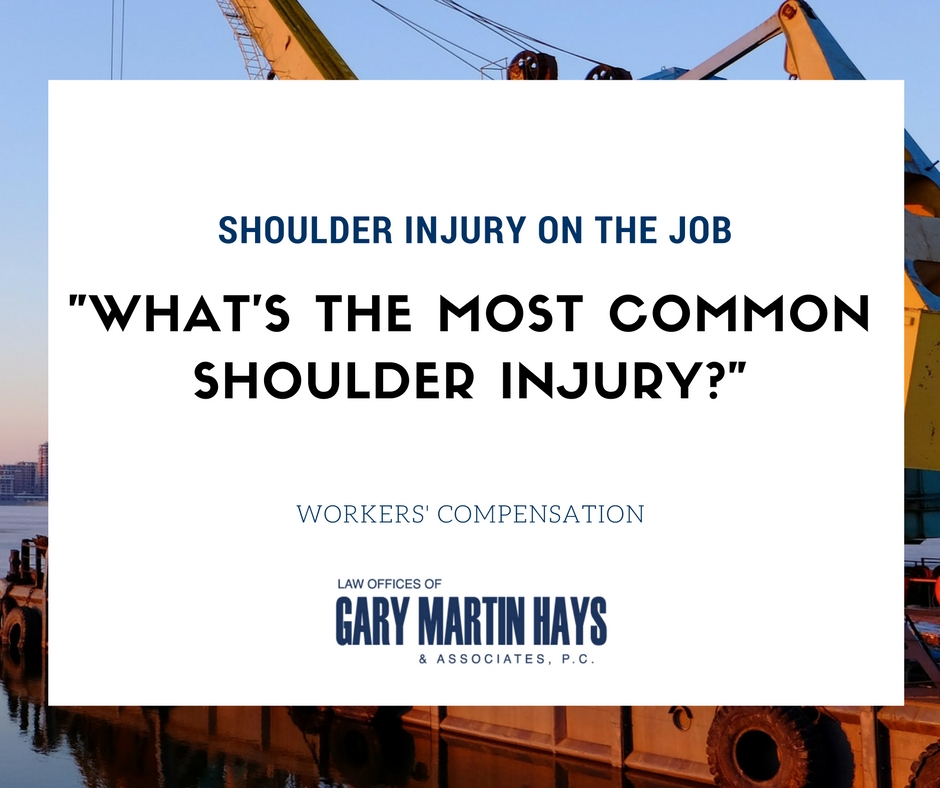Shoulder Injury on the Job?
 Shoulder Injuries on the job can occur from a worker doing a repetitive job, process, or operation on an assembly line, or from lifting heavy or bulky objects - especially if the job involves overhead lifting.
Shoulder Injuries on the job can occur from a worker doing a repetitive job, process, or operation on an assembly line, or from lifting heavy or bulky objects - especially if the job involves overhead lifting.
The shoulder is composed of three bones:
- Clavicle (collar bone)
- Scapula (shoulder blade)
- Humerus (upper arm bone)
For the shoulder to remain in a stable position, it must be anchored by muscles, tendons, and ligaments. In 2014, according to the Bureau of Labor Statistics, there were 88,980 workplace shoulder injuries reported in the US.
The most common type of shoulder injury is a torn rotator cuff. The rotator cuff is really a group of 4 muscles that keep the shoulder joint stable. The tear can either be classified as "full-thickness" or "partial-thickness" - depending upon the severity.
A full thickness tear extends from the top to the bottom of the muscle/tendon. A partial thickness tear effects at least some portion of the muscle/tendon. The tears can either be caused by a traumatic event - due to trauma from a fall or lifting a heavy object; or a chronic tear - the result of repeated actions over time with the arms working above shoulder level.
If you have a rotator cuff tear, you will often have:
- Pain on the top of the shoulder or down the outside of the arm;
- Shoulder Weakness
- Loss of the range of motion in the shoulder.
- The arm can feel heavy, weak, and have a constant, dull, achy pain.
The best way for a doctor to diagnose the injury is through imaging tests - such as an MRI, a CT scan or ultrasound imaging.
If you've sustained a shoulder injury on the job, fill out our free case evaluation.
